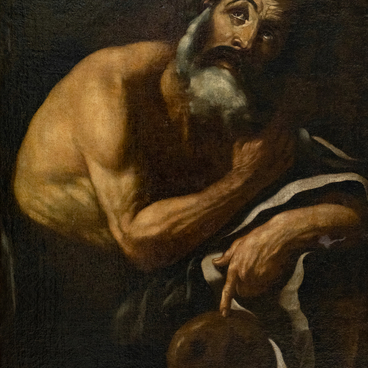The 17th century is commonly called the golden age of Flemish artistic culture. The stylistic originality of the Flemish school is based on the creative achievements of the great Peter Paul Rubens and his contemporaries, such as Antonis Van Dyck, Jacob Jordaens, David Teniers the Younger, and others. During this period, the mythological scenes appear as reality, and artists come up with the “real” still life or landscape themselves. The fictional but beautiful landscapes consist of bizarre mountains and rocks, faraway cities, castles in the distance, classic ruins, and fast-moving clouds.
The collection of the Sakha Republic National Art Museum features Lovis Bloemaert’s painting “Hilly Landscape with an Angler.” The landscape is distinguished by hidden symbolism. Some details of the painting helped to convey a theological message to the viewer. A mottled rooster sitting on a fence, chickens walking outside the fence, and the fence itself, intertwined with flexible rods, a small red-breasted bird sitting on a tree branch on the left, — add realistic elements to the picture.
The invented landscape is combined with the vital persuasiveness of the images of villagers talking at their usual occupation. A dog running along the bank and a wooden container for placing fish at the feet of an angler in a red hat enhance the verisimilitude of the genre scene. Birds are flying in the blue sky among the white cumulus clouds. The artist inspiringly composes and conveys the beauty of the real and imaginary world. He creates his own world, brighter and more full of life than reality itself.
The landscape is built using a kind of “backstage” in the composition, it is painted according to the scheme of color perspective: the brownish-ochre foreground (earth), the greenish middle ground (groves, thickets) and the bluish background (distance). The bright spots of the red cape of the gesticulating peasant, the red hat and the gaiters of the angler stand out against the background.
The tradition of symbolic interpretation of
painting was most widespread in Flanders and the Netherlands in the 16th and
17th centuries. Behind a simple image, people of that era saw more than meets the eye — they read the image
like a book.


